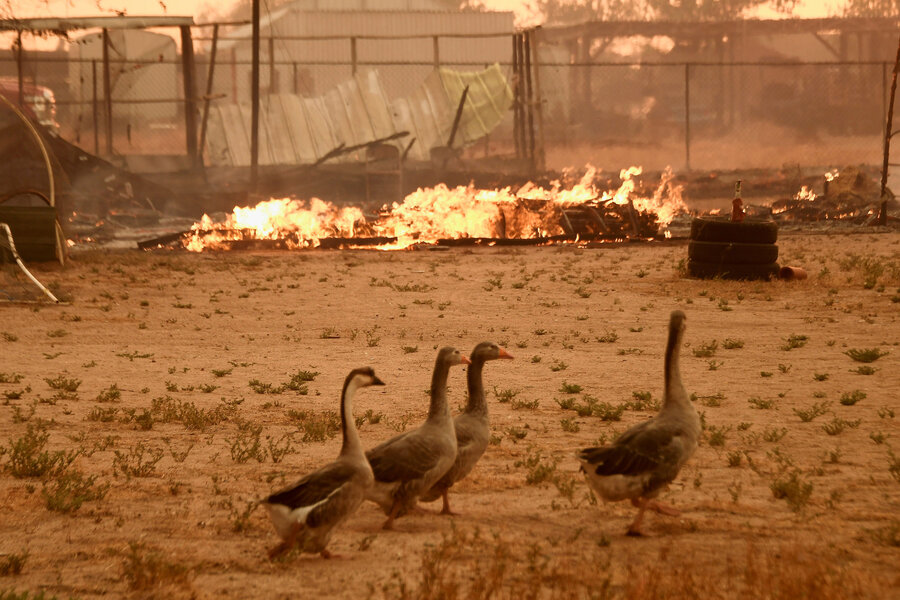Another big fire: Why fleeing Californians aren't surprised
Loading...
Another southern California fire roared into life in San Bernardino County on Tuesday, moving so fast that firefighters are losing track of the structures burnt and local sheriffs rushed from house to house to evacuate seven communities.
Ellen Pollema, who left her home of 25 years with her husband, three dogs, and a cat after a deputy brought word of the fire, wasn't terribly surprised.
"It's part of living in this canyon," she told the Los Angeles Times. "It went fast. But it's very dry."
Like many in her community, Ms. Pollema sees that years of drought have made these record fires part of living in the rural West.
"People need to be prepared and just know that that's part of the risk of living in these kinds of areas," Ms. Pollema told the LA Times. "We've got a beautiful community."
The Bluecut fire, as the Forest Service has called it, sprang into life in Cajon Pass on Tuesday morning and has already burnt 18,000 acres. The fire threatens at least 34,500 homes in communities northeast of Los Angeles. The hot weather and drought-dry brush have kept the fire moving quickly, leaving the 18 firefighting crews working on the blaze too busy to count how many have already burned.
Nearly 45 million homes are built in or near wilderness areas, making them more fire-prone, according to the National Fire Protection Association. This means 72,000 communities could face an evacuation order similar to Pollema's. Many have learned to take steps toward "fireproofing" their homes – clearing away the brush and vegetation for 10 feet around their homes to make them less likely to catch fire, for example.
"Fire prevention not only requires that you do the fuel reduction on the outside of the home, but also that you have the home 'firewise' so that you don’t start the neighborhood on fire," Gary Hatch, a retired fire chief in Arizona who spent 25 years fighting wildland fires, told The Christian Science Monitor last month.
Faulty wiring, smoldering cigarettes, and poorly maintained electrical boxes all require extra attention from those who live in these areas. Such problems are becoming more ingrained in how these communities operate, as such measures cease to be optional.
“This is going to sound cold. But if someone chooses to live in a rural area and continues to not be responsive to [fire-safety] education, sadly, the worst punishment they’re going to get is they’re going to lose their home in a fire,” Janet Upton, a fire service veteran, told the Monitor last month.
With "record" fires becoming more and more frequent, those who live with the new reality weigh the costs and benefits of staying. During the Bluecut fire, some said they were packing up; others wanted to "stay and fight" to protect their property. Steve Sager had packed up his truck to evacuate when he saw several neighbors who had set up an impromptu wildfire-watching party on a stone fence in sight of the smoke.
"It's kind of like a mild tailgate party," he told the LA Times, joining the wildfire spectators. "As long as they can keep it on that ridge we'll be OK. If it comes over that ridge too far, I'm out of here."






